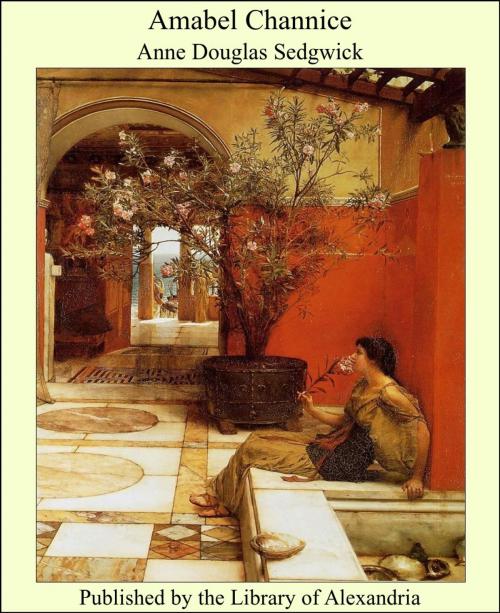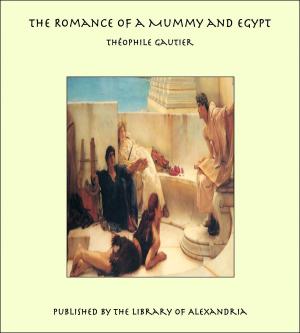| Author: | Anne Douglas Sedgwick | ISBN: | 9781465537744 |
| Publisher: | Library of Alexandria | Publication: | March 8, 2015 |
| Imprint: | Language: | English |
| Author: | Anne Douglas Sedgwick |
| ISBN: | 9781465537744 |
| Publisher: | Library of Alexandria |
| Publication: | March 8, 2015 |
| Imprint: | |
| Language: | English |
She was fond of the drawing-room, also, unbeautiful and grave to sadness though it was. The walls were wainscotted to the ceiling with ancient oak, so that though the north light entered at four high windows the room seemed dark. The furniture was ugly, miscellaneous and inappropriate. The room had been dismantled, and in place of the former drawing-room suite were gathered together incongruous waifs and strays from dining- and smoking-room and boudoir. A number of heavy chairs predominated covered in a maroon leather which had cracked in places; and there were three lugubrious sofas to match. By degrees, during her long and lonely years at Charlock House, Lady Channice had, at first tentatively, then with a growing assurance in her limited sphere of action, moved away all the ugliest, most trivial things: tattered brocade and gilt footstools, faded antimacassars, dismal groups of birds and butterflies under glass cases. When she sat alone in the evening, after Augustine, as child or boy, had gone to bed, the ghostly glimmer of the birds, the furtive glitter of a glass eye here and there, had seemed to her quite dreadful. The removal of the cases (they were large and heavy, and Mrs. Bray, the housekeeper, had looked grimly disapproving)—was her crowning act of courage, and ever since their departure she had breathed more freely. It had been easier to dispose of all the little colonies of faded photographs that stood on cabinets and tables; they were photographs of her husband's family and of his family's friends, people most of whom were quite unknown to her, and their continued presence in the abandoned house was due to indifference, not affection: no one had cared enough about them to put them away, far less to look at them. After looking at them for some years,—these girls in court dress of a bygone fashion, huntsmen holding crops, sashed babies and matrons in caps or tiaras,—Lady Channice had cared enough to put them away. She had not, either, to ask for Mrs. Bray's assistance or advice for this, a fact which was a relief, for Mrs. Bray was a rather dismal being and reminded her, indeed, of the stuffed birds in the removed glass cases. With her own hands she incarcerated the photographs in the drawers of a heavily carved bureau and turned the keys upon them. The only ornaments now, were the pale roses, the books, and, above her writing-desk, a little picture that she had brought with her, a water-colour sketch of her old home painted by her mOther many years ago. So the room looked very bare. It almost looked like the parlour of a convent; with a little more austerity, whitened walls and a few thick velvet and gilt lives of the saints on the tables, the likeness would have been complete. The house itself was conventual in aspect, and Lady Channice, as she stood there in the quiet light at the window, looked not unlike a nun, were it not for her crown of pale gold hair that shone in the dark room and seemed, like the roses, to bring into it the brightness of an outer, happier world. "Have you had a good read?" she asked her son. He had a book in his hand
She was fond of the drawing-room, also, unbeautiful and grave to sadness though it was. The walls were wainscotted to the ceiling with ancient oak, so that though the north light entered at four high windows the room seemed dark. The furniture was ugly, miscellaneous and inappropriate. The room had been dismantled, and in place of the former drawing-room suite were gathered together incongruous waifs and strays from dining- and smoking-room and boudoir. A number of heavy chairs predominated covered in a maroon leather which had cracked in places; and there were three lugubrious sofas to match. By degrees, during her long and lonely years at Charlock House, Lady Channice had, at first tentatively, then with a growing assurance in her limited sphere of action, moved away all the ugliest, most trivial things: tattered brocade and gilt footstools, faded antimacassars, dismal groups of birds and butterflies under glass cases. When she sat alone in the evening, after Augustine, as child or boy, had gone to bed, the ghostly glimmer of the birds, the furtive glitter of a glass eye here and there, had seemed to her quite dreadful. The removal of the cases (they were large and heavy, and Mrs. Bray, the housekeeper, had looked grimly disapproving)—was her crowning act of courage, and ever since their departure she had breathed more freely. It had been easier to dispose of all the little colonies of faded photographs that stood on cabinets and tables; they were photographs of her husband's family and of his family's friends, people most of whom were quite unknown to her, and their continued presence in the abandoned house was due to indifference, not affection: no one had cared enough about them to put them away, far less to look at them. After looking at them for some years,—these girls in court dress of a bygone fashion, huntsmen holding crops, sashed babies and matrons in caps or tiaras,—Lady Channice had cared enough to put them away. She had not, either, to ask for Mrs. Bray's assistance or advice for this, a fact which was a relief, for Mrs. Bray was a rather dismal being and reminded her, indeed, of the stuffed birds in the removed glass cases. With her own hands she incarcerated the photographs in the drawers of a heavily carved bureau and turned the keys upon them. The only ornaments now, were the pale roses, the books, and, above her writing-desk, a little picture that she had brought with her, a water-colour sketch of her old home painted by her mOther many years ago. So the room looked very bare. It almost looked like the parlour of a convent; with a little more austerity, whitened walls and a few thick velvet and gilt lives of the saints on the tables, the likeness would have been complete. The house itself was conventual in aspect, and Lady Channice, as she stood there in the quiet light at the window, looked not unlike a nun, were it not for her crown of pale gold hair that shone in the dark room and seemed, like the roses, to bring into it the brightness of an outer, happier world. "Have you had a good read?" she asked her son. He had a book in his hand















